Related Research Articles
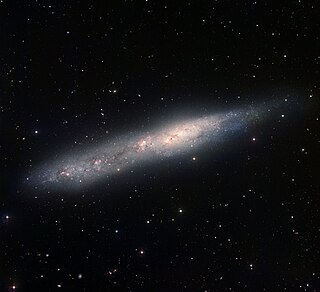
NGC 55, is a Magellanic type barred spiral galaxy located about 6.5 million light-years away in the constellation Sculptor. Along with its neighbor NGC 300, it is one of the closest galaxies to the Local Group, probably lying between the Milky Way and the Sculptor Group. It has an estimated mass of (2.0 ± 0.4) × 1010M☉.

NGC 188 is an open cluster in the constellation Cepheus. It was discovered by John Herschel in 1825. Unlike most open clusters that drift apart after a few million years because of the gravitational interaction of our Milky Way galaxy, NGC 188 lies far above the plane of the galaxy and is one of the most ancient of open clusters known, at approximately 6.8 billion years old.

NGC 246 is a planetary nebula in the constellation Cetus. It is the first known planetary nebula to have a hierarchical triple star system at its center. The nebula and the stars associated with it are listed in several catalogs, as summarized by the SIMBAD database. NGC 246 was discovered by William Herschel in 1785.

NGC 189 is an open cluster in the Cassiopeia constellation. It was discovered by Caroline Herschel on 27 September 1783, and independently rediscovered by John Herschel on 27 October 1829.
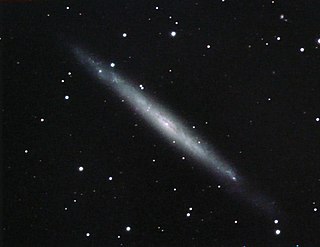
NGC 4244, also known as Caldwell 26, is an edge-on loose spiral galaxy in the constellation Canes Venatici, and is part of the M94 Group or Canes Venatici I Group, a galaxy group relatively close to the Local Group containing the Milky Way. In the sky, it is located near the yellow naked-eye star, Beta Canum Venaticorum, but also near the barred spiral galaxy NGC 4151 and irregular galaxy NGC 4214.
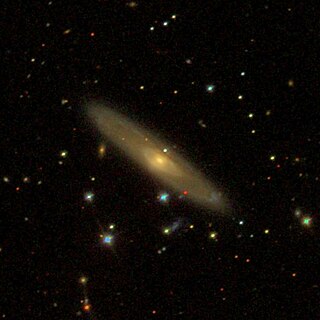
NGC 13 is a spiral galaxy in the constellation Andromeda. It is estimated to be about 220 million light-years away from the Sun. It was discovered on November 26, 1790, by William Herschel.
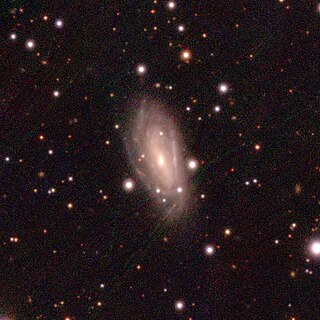
The New General Catalogue object NGC 48 is a barred spiral galaxy located approximately 79.3 million light-years from the Solar System in the constellation Andromeda.

"Legacy Survey Sky Browser". www.legacysurvey.org. Retrieved 2023-05-19.

NGC 51 is a lenticular galaxy in the constellation Andromeda. It has a diameter of 90,000 light-years. The galaxy was discovered on September 7, 1885 by Lewis Swift, who described it as "Pretty faint, pretty small, round, brighter middle."

NGC 61 is a pair of lenticular galaxies, NGC 61-A and NGC 61-B in the constellation Cetus. Both were discovered on September 10, 1785 by William Herschel.

NGC 70 is a spiral galaxy located in the constellation Andromeda. It was discovered on October 7, 1855, by R. J. Mitchell and was also observed on December 19, 1897 by Guillaume Bigourdan from France who described it as "extremely faint, very small, round, between 2 faint stars".

NGC 72 is a barred spiral galaxy estimated to be about 320 million light-years away in the constellation of Andromeda. It was discovered by R. J. Mitchell in 1855 and its magnitude is 13.5.
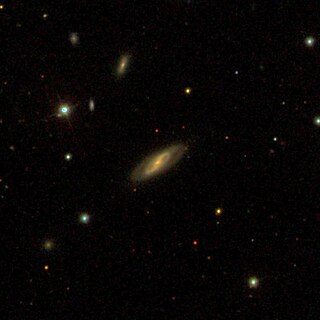
NGC 74 is a lenticular galaxy located in the Andromeda constellation. It was discovered on 7 October 1855 by Irish astronomer William Parsons.

NGC 359 is an elliptical galaxy located approximately 238 million light-years from the Solar System in the constellation Cetus. It was discovered on September 2, 1864, by Albert Marth. It was described by Dreyer as "extremely faint, very small."

NGC 468 is a spiral galaxy in the constellation Pisces. Located approximately 209 million light-years from Earth, it was discovered by John Frederick William Herschel in 1827.

NGC 471 is a lenticular galaxy located about 168 million light-years away from Earth in the constellation Pisces. It was discovered by the German astronomer Albert Marth on November 3, 1864.

NGC 906 is a barred spiral galaxy in the constellation Andromeda in the northern sky. It is estimated to be 215 million light years from the Milky Way and has a diameter of approximately 110,000 ly. NGC 906 was discovered on October 30, 1878 by astronomer Édouard Stephan.
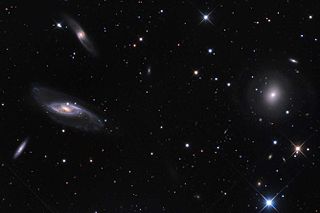
NGC 542 is a spiral galaxy in the constellation Andromeda, which is approximately 215 million light years from the Milky Way. Together with the galaxies NGC 529, NGC 531, and NGC 536, it forms the Hickson Compact Group 10, abbreviated HCG 10. It was discovered by Irish astronomer R.J. Mitchell in 1885.

NGC 937 is a barred spiral galaxy located in the constellation Andromeda about 251 million light years from the Milky Way. It was discovered by the French astronomer Édouard Stephan in 1884.
References
- 1 2 3 "NGC 6621". SIMBAD . Centre de données astronomiques de Strasbourg . Retrieved 20 April 2019.